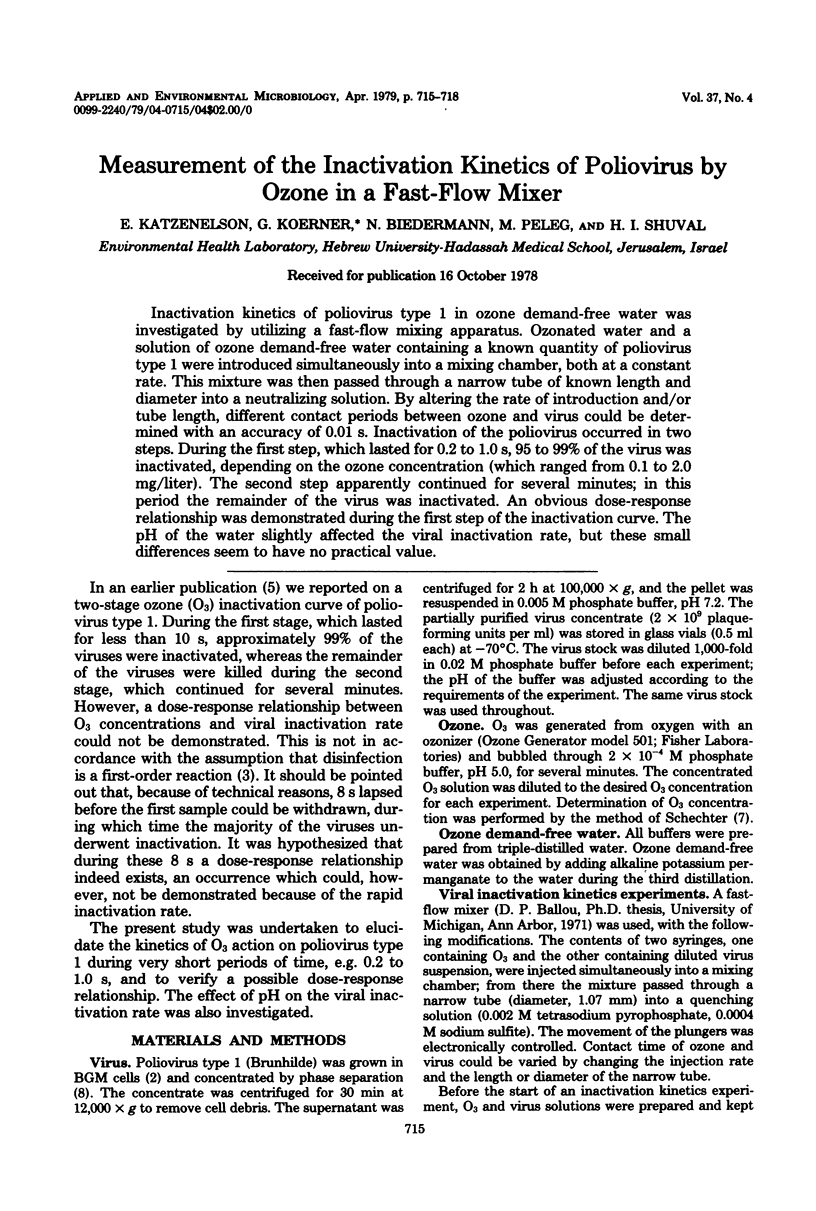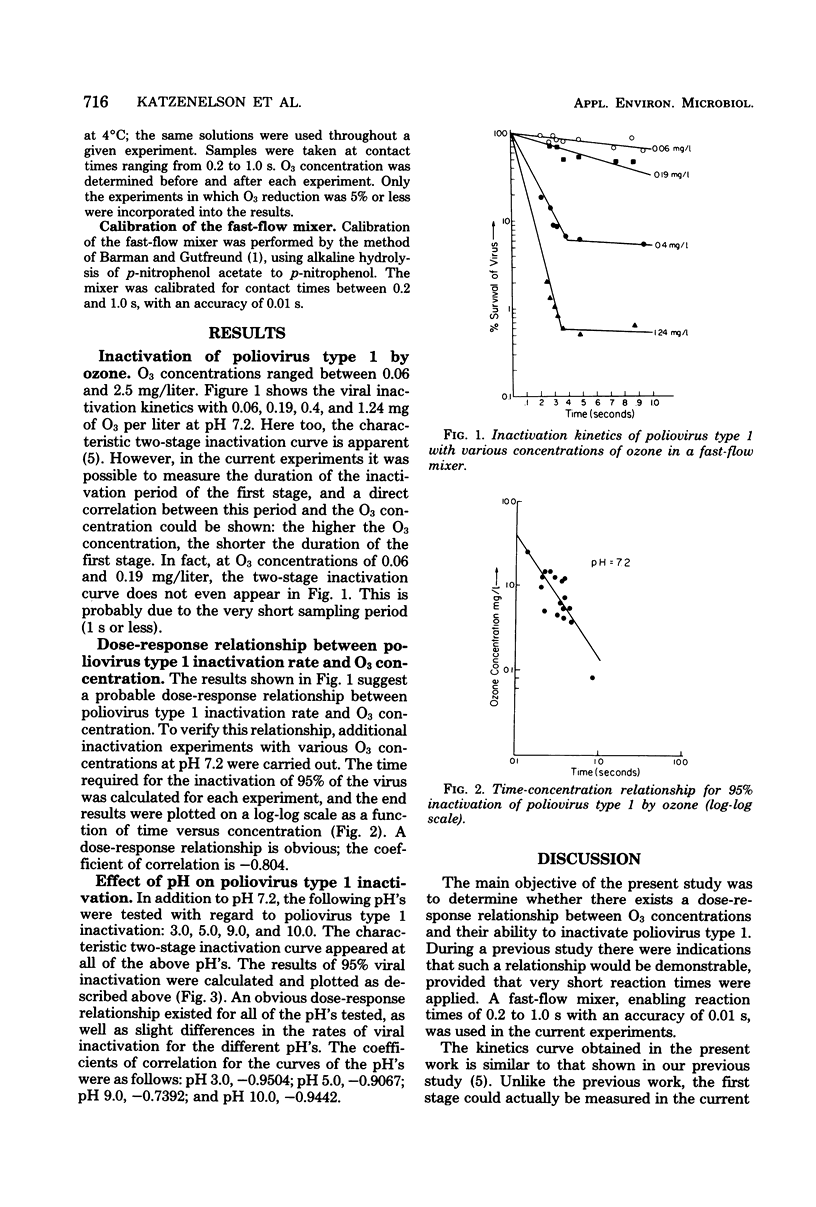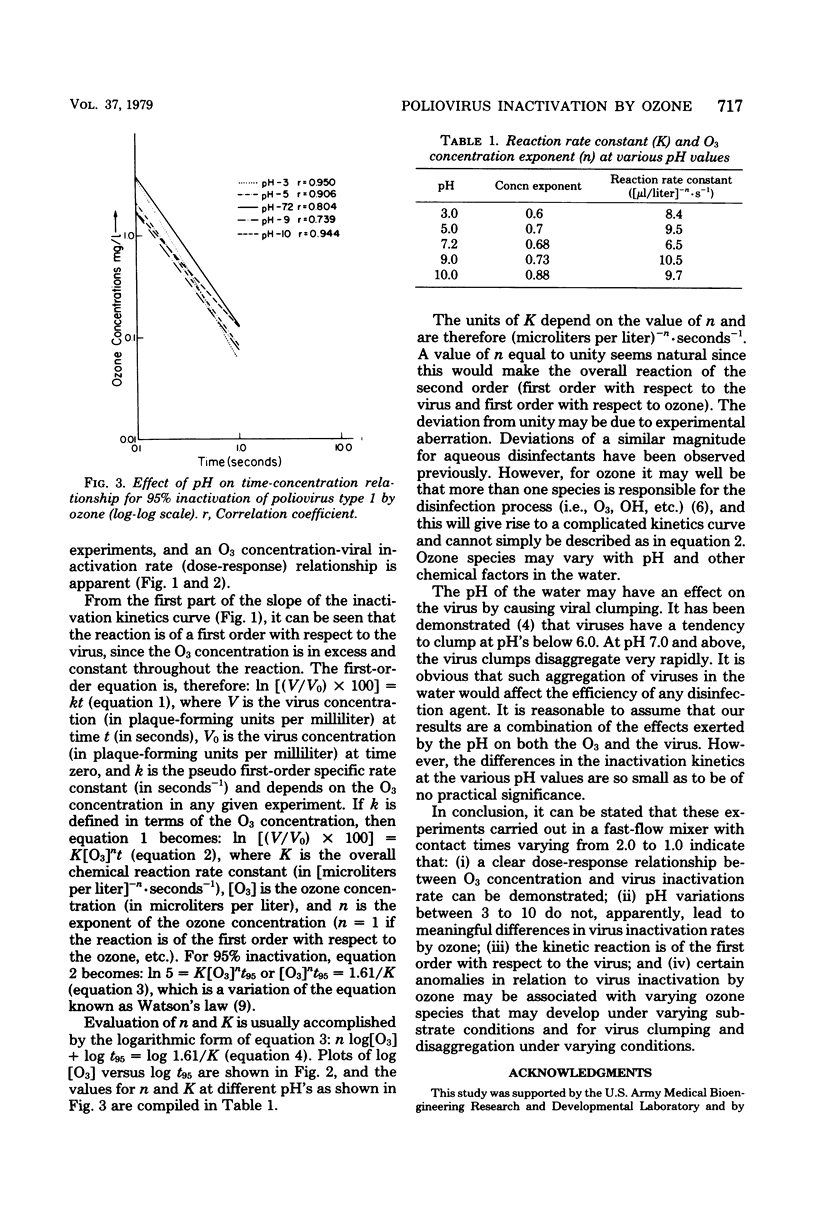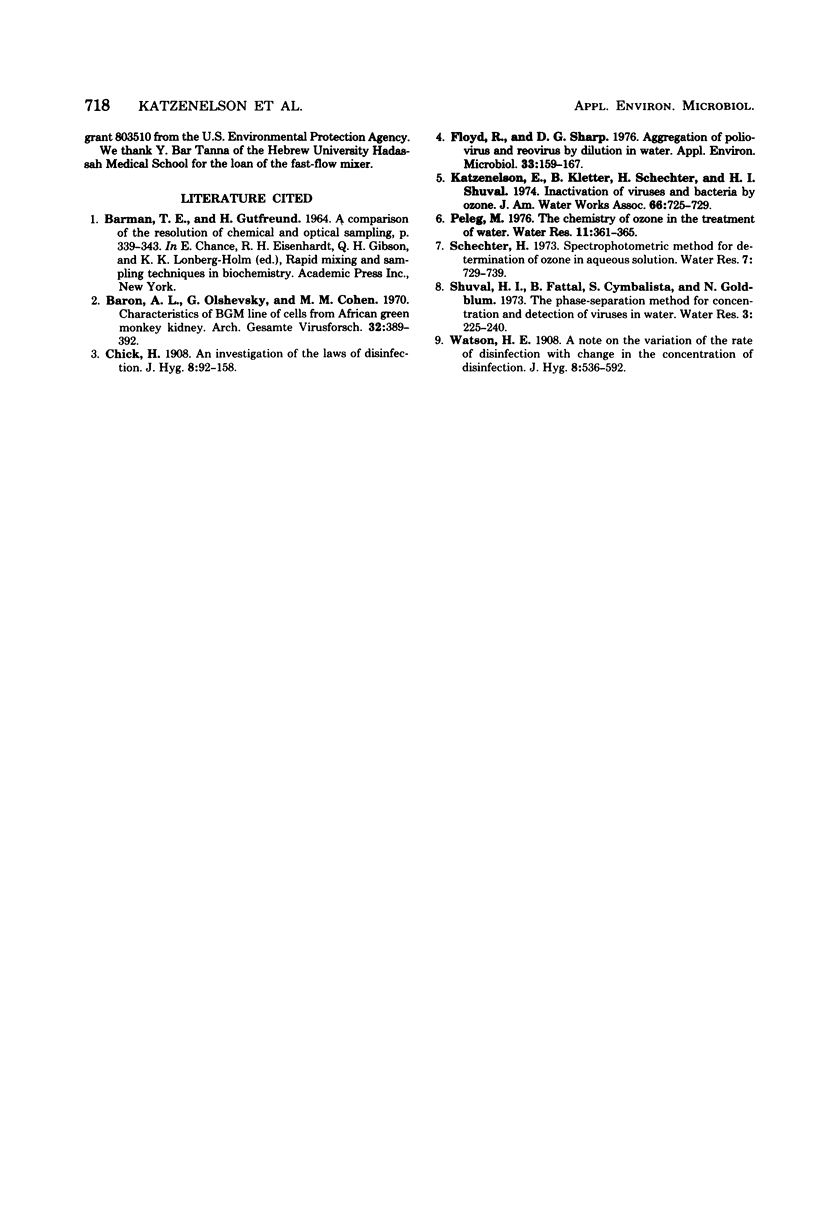Abstract
Inactivation kinetics of poliovirus type 1 in ozone demand-free water was investigated by utilizing a fast-flow mixing apparatus. Ozonated water and a solution of ozone demand-free water containing a known quantity of poliovirus type 1 were introduced simultaneously into a mixing chamber, both at a constant rate. This mixture was then passed through a narrow tube of known length and diameter into a neutralizing solution. By altering the rate of introduction and/or tube length, different contact periods between ozone and virus could be determined with an accuracy of 0.01 s. Inactivation of the poliovirus occurred in two steps. During the first step, which lasted for 0.2 to 1.0 s, 95 to 99% of the virus was inactivated, depending on the ozone concentration (which ranged from 0.1 to 2.0 mg/liter). The second step apparently continued for several minutes; in this period the remainder of the virus was inactivated. An obvious dose-response relationship was demonstrated during the first step of the inactivation curve. The pH of the water slightly affected the viral inactivation rate, but these small differences seem to have no practical value.
Full text
PDF



Selected References
These references are in PubMed. This may not be the complete list of references from this article.
- Barron A. L., Olshevsky C., Cohen M. M. Characteristics of the BGM line of cells from African green monkey kidney. Brief report. Arch Gesamte Virusforsch. 1970;32(4):389–392. doi: 10.1007/BF01250067. [DOI] [PubMed] [Google Scholar]
- Floyd R., Sharp D. G. Aggregation of poliovirus and reovirus by dilution in water. Appl Environ Microbiol. 1977 Jan;33(1):159–167. doi: 10.1128/aem.33.1.159-167.1977. [DOI] [PMC free article] [PubMed] [Google Scholar]


